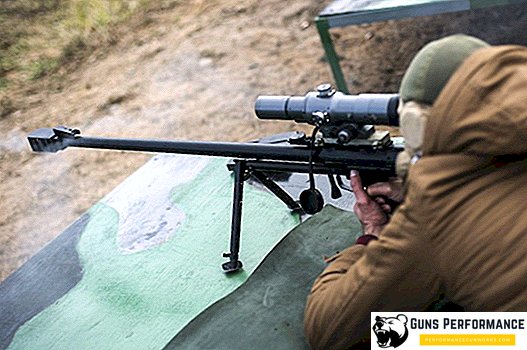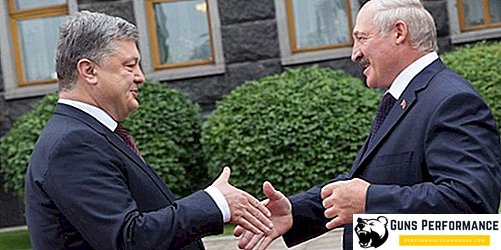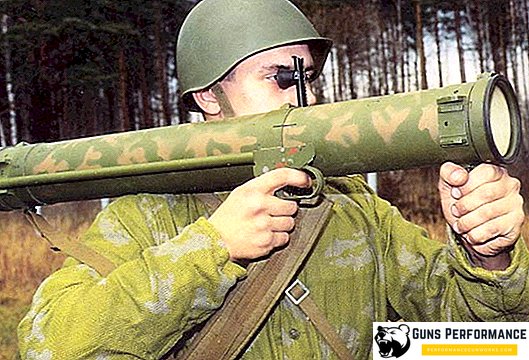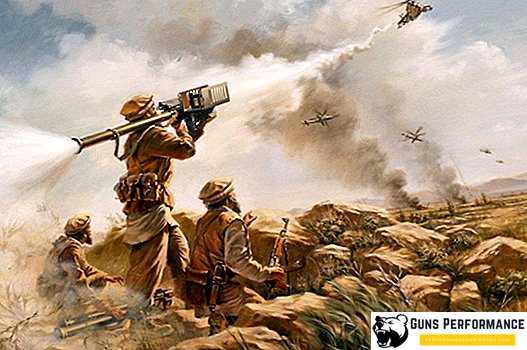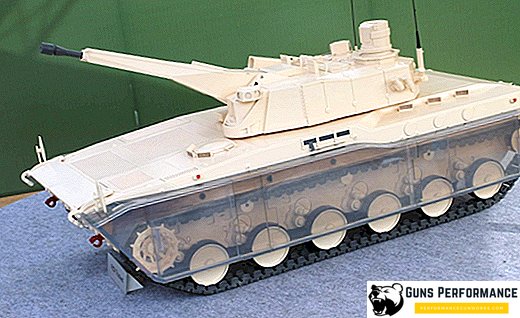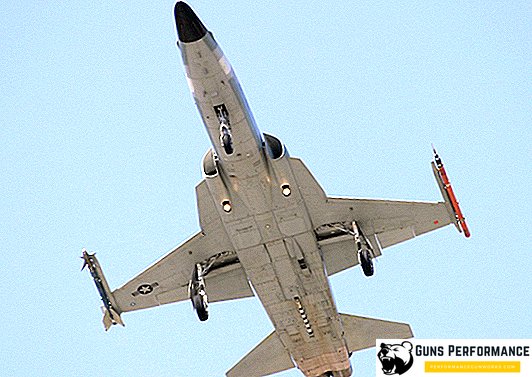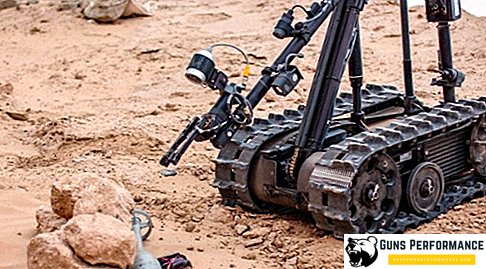BA 6 - the Soviet armored vehicle of the middle class, which had three axles (6x4) and the chassis of the GAZ-AAA truck. The technique was used by various units of the Red Army in the late 30s - early 40s of the last century. After the start of mass production, export to other countries was carried out.
General information about BA-6

The sixth model was a continuation of the third. Her body was transferred to a new chassis, applying several modifications. The main differences from BA-3:
- The strength of the connection to the chassis is increased;
- The side doors of the engine compartment were made from a single sheet;
- The back door was abolished;
- Above the engine made an additional hatch to increase the incoming cooling air;
- Cables for opening the blinds in front of the radiator were replaced with rods;
- In the front sheet and the back of the slot made for the application of "Nagant";
- The track chains were replaced with hooks.
This list shows the major changes. In fact, there are many more, but they are less significant.
Design BA-6

The integration of the old hull on the new chassis was carried out by trimming the back of the frame by 40 centimeters. 10 brackets were fastened to the vertical flanges of the side members. They put on the body and fastened with bolts. The distance between the front axle and the rear wheels is 1,060 millimeters. The strength of the front spring increased three plates.

Specifications:
- Length - 4.9 m;
- Width - 2.1 m;
- Height - 2.4 m;
- Wheel formula - 6x4;
- Power plant power - 40 horsepower;
- Maximum speed - 43 km / h;
- A course without refueling is 130–200 km (depending on road conditions).
Tires with a spongy camera were installed to increase the survivability of the car: they were not afraid of punctures and bullet hits (thanks to a foam rubber filling). The tilt of the steering column was lowered to 29 degrees (this improved the working conditions of the steering).
Under the hood installed gasoline power unit, developing power to 40 horsepower. Together with him worked a manual gearbox (4 + 1) with a multiple gear with sliding gears. The specified power was not enough to reach a five-ton machine at an acceptable speed. One fuel tank was placed in the engine compartment (44 liters). Another one installed on the roof above the driver (24 liters). In the fighting, it became clear that the last decision was a fatal mistake. When the tank was broken through, fuel entered the cabin and often ignited.
The armament of the BA is a 6–45 mm cannon 20K and a 7.62 mm machine gun DT, which were located in a cylindrical turret. In the frontal part to the right of the driver there was another DT. The thickness of the sheets of the tower - 8 millimeters. Vertical aiming was carried out in the range from -6 to +22 degrees. For the turn of the tower answered shooter, who used a manual drive. For aiming at the target used telescopic and periscopic panoramic sighting mechanisms.

The armored car had a rich internal equipment. Under the spare parts for weapons identified four boxes (located on the floor). For food and blasting agents, 4 bags were installed (they were fastened with straps on the side plates at the rear of the vehicle). In the same part was attached first aid kit.
Four more bags of chemical property were located at the bottom of the tower. The shooter had his own fire extinguisher and a first aid kit. He also had a jack. A box with tools for repairing BA 6 was positioned behind the seat by machine gunners. There were also spare glasses for the viewing devices of the tower. Many other small items were evenly distributed throughout the cabin (tow rope, crank, etc.).
The battery was placed in the left side of the management compartment under the floor. An introduction to the design of indoor lighting was a great joy for the military. There were also sockets (near the driver’s seat and in the tower) for switching on portable lamps.
After a series of tests, experts have identified two major drawbacks - a small reserve of spongy-tube tires (up to 1,300 km) and a low maximum speed. The remaining cons are minor:
- Due to the small size of the door loading and unloading of the crew was difficult. Landing through the tower is difficult due to the lack of steps and handles;
- Viewing slots gave a limited view due to poorly designed construction;
- Shooting accuracy while driving was reduced due to a strong buildup;
- The general conditions in the cabin were deemed uncomfortable;
- The ventilation system worked poorly.
Some copies had a radio station on board. Such machines were intended for squad commanders and staff leadership.
BA 6 M and 9

Modification 6M - an improved version of the standard technique. She received an extra tank of increased volume (52 liters). His location, despite the wishes of the soldiers, did not change. The number of brackets for mounting reduced to 8 pieces.
The main innovation was the change of the tower. Cylindrical shape replaced conic. To increase the bulletproofness, the sheets from which it was made were placed at an angle of 10 degrees and sealed together by welding. Armament, interior equipment and specifications have not changed.
In the second half of 1936, they released a light version of the armored car. Weight reduction achieved through the abolition of the 45-millimeter cannon. In the tower and the frontal part of the machine gun left. The new model received the name BA-9. Her weight was 4.3 tons. Despite the passage of the necessary tests, the 9th model was not included in mass production due to a shortage of weapons in the country.
Combat use of BA-6

After establishing a mass release, the country's leadership took care of exporting new armored vehicles to other countries. The first was Spain, which received 80 copies in the framework of Allied assistance. The first tests occurred in January 1937, when Spanish soldiers fought offensive against Madrid. Then the military leadership used all available BA 6, distributing them into different units.
In December 1937, 30 armored vehicles took part in an offensive operation on the Teruel ledge. Then the Republicans won a landslide victory over the enemy. Several cars survived after the end of the civil war. They were in service until the early 50s.
79 units of equipment of the USSR put into service in the army of Mongolia. They were used in various battles, including the Battle of the Khalkhin Gol River. The total number of exported cars was 187 units. The Soviet army used the BA 6 in a campaign against Poland and battles with the Finns. Transport managed to take part in the Second World War, having deactivated in 1942. In Finland, trophy equipment was exploited until 1956.
What can be concluded?

The history of the BA-6 did not turn out to be rich, since the technology became an intermediate stage up to the 10th model. But even this did not prevent her from making a great contribution to the success of many pre-war operations. The military spoke positively about transport, despite the presence of significant shortcomings.
The main problem was poor ventilation and the presence of a gas tank on the roof (in the event of a shell hit, a fire occurred). Throughout the six-year history of the car, the designers have not taken any measures to fix it. The only surviving specimen can be seen on the observation platform of the TsMVS in Moscow. Total released 386 cars.
1936 Medium Armored Car BA-6

Technical characteristics TTH BA-6
- Years of release: 1936-1938.
- Total manufactured: 394 pcs.
- Manufacturing plants: Izhora plant (Leningrad).
- Developer: KB Izhora plant.
- Combat use: the civil war in Spain (1936-1939), the military conflict on the river Khalkhin-Gol (1939), the Soviet-Finnish (1939) and the Great Patriotic War.
- Combat weight: 5.12 tons.
- Crew - 4 people.
- Overall dimensions: length - 4900 mm, width - 2007 mm, 2360 mm, clearance - 235-240 mm.
- Armament: 45-mm 20-K (ammunition - 60 shots), two 7.62-mm DT (ammunition - 3276 rounds).
- Armor thickness: 8-9 mm.
- Engine: GAZ-AA. Type - 4-cylinder, carburetor, power - 40 hp
- The maximum speed of movement is 42-52 km / h.
- Cruising on the highway - 265 km.
- Overcoming obstacles: wall - 0.3 m, ditch - 0.8 m.
Designed on the basis of the truck GAZ-AAA and the body of the armored car BA-3. At the time of creation possessed sufficiently powerful weapons. A feature of the BA-6 was the use of bullet-resistant tires "GK". The armored car was in service with the reconnaissance units of rifle, tank and cavalry units of the Red Army.



